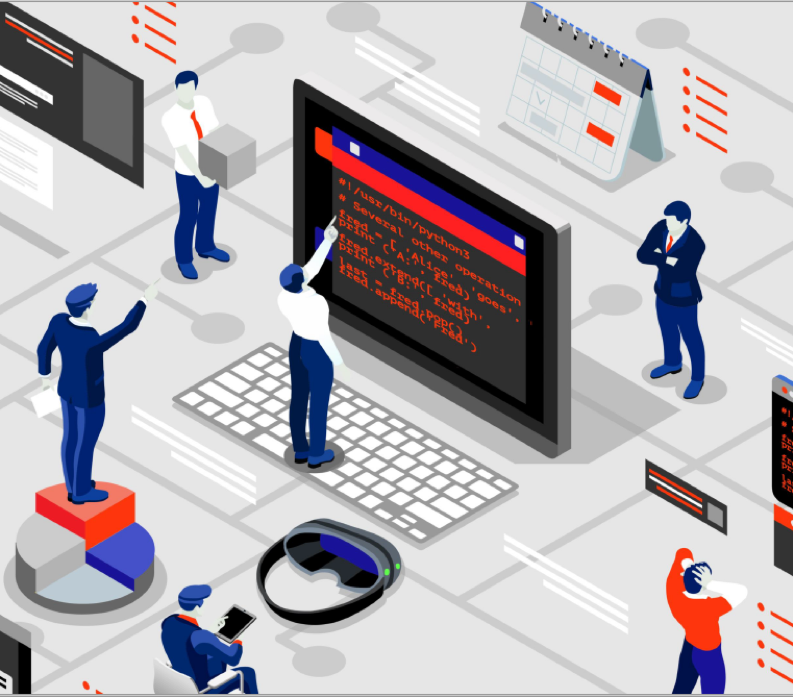
Advancing the capabilities of CAD.
 At its annual DevCon event held this year in Milan, the Open Design Alliance brought its membership up to date on the significant development the organization has been doing at its members’ behest. Established in the ’90s by a group of companies competing with Autodesk in the CAD field, the ODA’s charter was to create an open option of DWG, Autodesk’s native format for AutoCAD to make it easier to share and reuse drawing files with or without Autodesk’s AutoCAD.
At its annual DevCon event held this year in Milan, the Open Design Alliance brought its membership up to date on the significant development the organization has been doing at its members’ behest. Established in the ’90s by a group of companies competing with Autodesk in the CAD field, the ODA’s charter was to create an open option of DWG, Autodesk’s native format for AutoCAD to make it easier to share and reuse drawing files with or without Autodesk’s AutoCAD.
The ODA has formalized DWG with version control with the ability to compare files and handle branching and merging. Peterson says he doesn’t understand how DWG has been able to survive all these years without version control.
That was a very long time ago, and this year ODA and its member companies demonstrated the strength of open standards and the organization’s ability to meet the demands of end customers. There’s a lot of firepower in the ODA membership which includes Bentley, Bricsys, Graebert, Hexagon, IntelliCAD, OnShape, Siemens, and ZWSoft among others. The ODA members pay dues and help provide input on the direction of the organization. Most of the companies are dependent on the DWG format—they have used the ODA’s CAD engine to build an alternative CAD program or for DWG-based CAD programs.
In some way, DWG is an important component to their business model but in the last 18 months or so the group has branched out to help its members keep up with the evolving requirements of design in the digital era. It has made surprising progress, especially for a group working within standards requirements.
The ODA has its own development teams drawn primarily from Russia and eastern Europe. With membership growth, organization president Neil Peterson adds on to its in-house team of developers. He says that what they’re building are “tool kits for interoperability,” and that the organization will follow the lead of their members into whatever realms of interoperability make sense.
The organization is pumping out SDKs. This year they’ve got a facet modeler SDK, and they’re also working on a solid modeler that supports B-Reps. The ODA Facet Modeler has been part of the ODA’s 3D toolset for architectural applications. Now, the ODA has further developed it and is releasing it as a standalone option for the membership. In addition, says Sergey Vishnevetsky, ODA Development Director, members are interested in having access to solid modeling technology, but they don’t need or want an expensive third-party modeler. At the conference, he mentioned that some members have expressed interest in solid modeling capabilities for rendering. The ODA’s Solid Modeler 2020 now has sweeps and extrusions along a path and models can be saved to DWG as ACIS compatible 3D solids. Most attractive for members is that the solid modeler and the facet modeler come as part of the standard ODA membership.
For Peterson, the Visualize 3D viewer is a bright spot. Adding Visualize to the group’s portfolio has encouraged new members to sign on and the ODA is putting together it’s key to the BIM tools.
Other SDKs include BimNv SDK (support for Navisworks files), BimRv SDK (Revit support), and the Drawings SDK, a core component of the ODA repository.
The Drawings SDK includes the work the ODA is doing toward a Common Data Access (CDA) framework to access structure and property information in a common manner for all ODA supported formats. In addition, the ODA maintains DWG verticals for architecture, civil, map, and mechanical fields in SDKs for members.
Since its founding, the ODA has maintained a low-priced membership tier to encourage small companies and new members to grow but Peterson says they’ve decided to limit that low-cost tier to a two-year period. As a result, says Peterson, members have generally stepped up to the standard tier because they want the new expanded set of tools the ODA is developing. That has meant more revenue for the organization and therefore more developers.
Right now, the emphasis is on the AEC/Infrastructure fields because those fields are seeing significant growth. It’s also where there is the most need considering how long those industries have lagged behind manufacturing.
Expansion
In recent work, Bricsys and other ODA members have been building their products to support BIM workflows, which generally speaking means the ability to access files across software platforms, maintain data related to projects, and enable collaboration with everyone on the project be they in the same company or scattered across different companies and locations. The has inspired further work to add cloud support to the ODA’s portfolio and Visualize.
Visualize 2020 was introduced this summer with support for cutting planes, and now supports B-Rep data and the ODA has added support for two additional formats, IFC and U3D. The developers have also added new opacity and bump mapping support, along with a native viewer app for iOS.
Some of the technologies the ODA has built or is developing to add on to its core DWG format and CAD engine is a support for multiple formats within the Visualize viewer, support for Revit workflows with the ability to read and write RVT and RFA files, and the ability to publish 3D PDF documents.
As part of its work supporting IFC, the ODA has run headlong into the territory of the buildingSmart (or bSI, formerly the International Alliance for Interoperability, IAI) organization resulting in an alliance that both bodies hope will enable IFC to adapt faster to industry demands. The IFC standard includes multiple formats and allows for entities to include information about themselves and to be arranged in an object-based inheritance hierarchy. It is an open standard and registered by ISO. Because of its complexity, it is an expensive standard as well. Through their alliance with bSI, ODA can serve as a testing body and it’s hope to enable the certification process to move faster than it has in the past. IFC is a broadly accepted standard for BIM collaboration but it is slow-moving, which is typical for most industry standards. Because ODA’s membership represents a significant chunk of the user community, the two organizations are hoping they can streamline the process. In return, the ODA members are then rewarded with access to IFC as part of their membership.
The two groups see this as a pretty big deal. In their published release about the collaboration, Richard Petrie, Chief Executive, bSI said, “By focusing on our efforts collectively, I believe we can make a real impact by accelerating the development and deployment of software solutions.” ODA President Neil Peterson said, “With bSI focused on standards creation, and ODA focused on standards implementation, there’s a natural synergy between the two organizations.”
Publish
The ODA developed support for 3D PDF in 2014 and since that time, it has been building in support for formats to support BIM and manufacturing workflows. It has all been combined into the Publish SDK. The list of supported formats is long with the expected CAD formats such as DWG, DWF, DGN, ACIS, Parasolid, Autodesk Revit, Collada, OBJ, and STL as well as the ODA’s Visualize Stream Format (VSF). The ODA has also reverse-engineered support for Navisworks files, and through its relationship with bSI will have support for IFC.
3D PDF has a number of nice capabilities in addition to creating 3D models that can be interrogated and explored. The 3D PDF format enables the components of models to be measured. It also allows users to create collections of views that can help tell the story of a project. It supports the creation of animations using JavaScript. Users can create interactive parts lists. For manufacturing, 3D PDF supports the creation of production and manufacturing information (PMI) packages with dimensions and tolerances.
Many of these features have been part of 3D PDF since its introduction but Peterson notes that companies have not been taking advantage of them as much as expected. We’ve heard the same thing from Siemens, which has implemented 3D PDF as an option for creating lightweight communication packages for digital twin information.
On one hand, it’s surprising that these nifty features may not be as widely used as expected, but the act of packaging content for exchange also breaks the digital thread, which brings us to the cloud.

Cloud development
As we’ve been saying, sooner or later, just about every business is going to have to come to grips with the cloud and decide how they want to take advantage of its power. At the ODA’s conference, we were told that with the obvious exception of OnShape, the membership is not so much interested in offering CAD functionality in the cloud as it is interested in using the cloud for a central storage resource and focal point for collaboration, which can ensure data is up to date. The developers are interested in Revit files accessible in the cloud and IFC.
Peterson observes that CAD in the cloud tends to reestablish proprietary models for CAD users. He talked a little bit about how the ODA’s new Open Cloud technology offers a better approach for compatibility between cloud-based programs.
The ODA’s Open Cloud technology will make it easier and more consistent for ODA members to add cloud support to their products.
What do we think?
Companies may have liked the idea of keeping their customers corralled with proprietary standards, integrated in-house products, but that approach is looking more and more old fashioned, and it’s probably always been untenable. Customers are demanding interoperability and vendors have had to come around and give the customers what they want. Open standards organizations and open source developers have been around but now they’re pooling their resources and repositories like GitHub are helping maintain development resources.
Members of the ODA tend to rely on specific pieces of the technology stack, with the majority relying on the ODA’s DWG which gives the group a common base for development. They’re also picking up Visualize, and the BIM formats. Each of the companies also takes pride in their homegrown technology. The ODA saves them from having to reinvent technology that’s been around and commonly used.
It has taken a long time, but the open approach is being recognized as a common-sense approach for customers. The thing is, it’s not always the easiest path. An organization like the ODA and other standards organizations offer a venue for competitors to come together and find common ground. It’s still complicated, but there is at least a common language.






